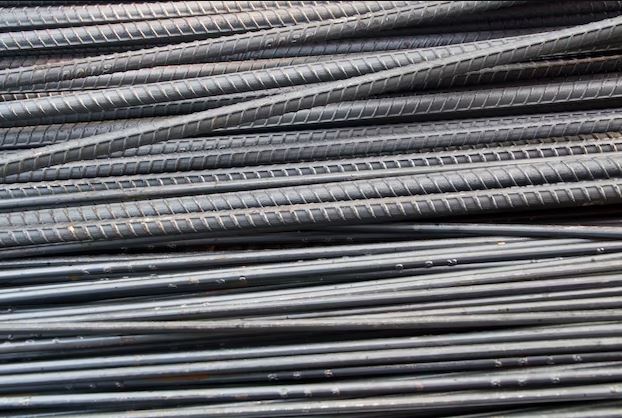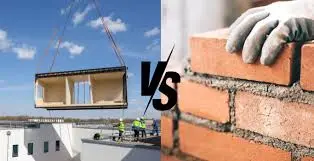How To Find out Which TMT BAR is Strong?
What is a TMT bar?
TMT stands for Thermo Mechanical Treatment, which is a thermomechanical procedure. TMT steel bars are commonly used in construction to provide additional protection against earthquakes and other natural disasters. To maintain the safety of your structure, TMT steel bars should be corrosion resistant, which will help it last longer.
Manufacturing process of steel TMT bars
TMT steel bars are manufactured using a metallurgical technique. This comprises mechanical deformation like compression, forging, and rolling, as well as thermal operations like heat treatment and quenching. TMT refers to the treatment of a steel rod by heating it to a high temperature and then rapidly cooling the periphery, resulting in a hard material layer called martensite.
| Best Buider Floor Apartment in Chennai |
Heating, rolling, and forming of reinforced steel bars
This is the initial stage of the TMT bar production process. Steel billets are used as the basic material to make TMT bars. These billets are manufactured by first converting iron ore to iron, which is then converted into steel billets. The technologies used to convert iron to steel have advanced significantly, and steel makers today use a variety of procedures to increase the steel's strength and longevity.
To create TMT bars, steel billets are first heated to around 1200 °C to 1250 °C. These are then rolled through a rolling mill stand to achieve the final size and shape of a reinforced bar. This is commonly known as the TMT rolling mill process.
Quenching
After leaving the rolling mill stand, the TMT bars are rapidly cooled in a quenching box. This box uses pressurized water and a particular nozzle mechanism to assist the bars achieve specific material qualities.
When the hot reinforced bar leaves the final rolling mill stand, it is instantly quenched - a sort of heat treatment in which the rebars are rapidly cooled by water in a quenching box to achieve specific material qualities. The quick cooling toughens the outer layer of the steel bar, increasing its tensile strength and endurance.
Quenching changes the outer surface of the strengthened bar to Martensite. Martensite is a hard type of steel that causes it to shrink, pressurizing the core. This mechanism contributes to the formation of proper crystal structures. As a result, quenching causes the outside half of the bar to cool and harden while keeping the center hot.
Self-tempering
When the bars exit the quenching box, the core remains hotter than the surface. This permits heat to pass from the inner core to the surface, tempering the outer Martensite layer and generating a structure known as 'Tempered Martensite'. This improves the strength of the TMT bar.
Atmospheric cooling
During the self-tempering process, the bars are atmospherically cooled to equalize the temperatures of the soft inner core and the hardened Martensite coating. Once the bars have completely cooled, the final structure will consist of a robust outer layer and a ductile core. This procedure boosts the tensile strength of TMT bars, making them highly ductile and weldable.
TMT bar quality is determined by three factors:
• Quality of raw materials
• A superior rolling mill stand
• Advanced quenching and tempering technology
Advantages of using TMT Bars in construction:
• Lightweight and easy for transportation.
• Flexible
• Can survive flames and earthquakes.
• Excellent malleability, ductility, strength, and weldability.
• Recyclable and reusable without compromising quality.
Why do we use TMT bars for construction?
♦ TMT bars are free of surface defects and provide greater structural strength.
♦ TMT bars can withstand abrupt stress loads. Thus, they are an ideal choice for use in seismic zones 3, 4, and 5.
♦ TMT has high ductile strength, which allows for the creation of innovative design constructions.
♦ The TMT process makes them corrosion-resistant, therefore they are employed in structures such as dams, bridges, and canals. (often interaction with water)
♦ Because of their many strong qualities, they provide constructions with long-term viability.
♦ TMT is essential for strengthening concrete and preventing cracks.
♦ TMT bars are fireproof and can withstand fires up to 1000 degrees Celsius.
♦ TMT bars are less expensive and more practicable than conventional steel bars.
The main types of stainless steel are
• Ferritic
• austenitic
• martensitic
Why is cement reinforced with TMT bars during construction?
♦ Simply improve the structure's holding and anchoring properties.
♦ Cement or concrete has excellent compressive strength but low tensile and ductility. This is why cement is reinforced with TMT bars, which improves bonding and reduces slippage.
♦ This reinforcement helps to prevent cracks in concrete or cement.
♦ The temperature change in the environment allows them to expand and contract freely while experiencing various compression, tension, and shear stresses.
What aspects should be considered before choosing a TMT bar?
♦ The TMT bars are of high grade and meet international standards. BIS 1786-2008.
♦ The appropriate type of grade.
♦ Flexibility and Bendability.
♦ Fire-resistant properties.
♦ Corrosion-resistant.
♦ Earthquake resistance.
♦ Cost-effective.
How many grades of TMT bars are available?
♦ Traditionally, nine grades of TMTs are provided.
♦ However, currently, the most common and reliable is Fe-550 grade TMT bars.
♦ Some of them include Fe-415, Fe-500, Fe-550D, and Fe-600.
How Can I Check the Quality of TMT bars?
♦ MT bars must be ISI certified and have an ISI mark on the product.
♦ Each TMT bar should have the brand/manufacturer's name etched along with the grade.
♦ Manufacturers must present you with an authenticity report based on chemical and physical tests.
♦ The standard length of each TMT rod should be 12 meters.
♦ Ensure the TMT bars adhere to IS 1786:2008.
♦ Each bar's diameter should be uniform and consistent.
♦ When receiving the order, the item should be free of rust, grease, and paint.
What are the different uses of TMT bars?
♦ TMT bars can be employed in any construction around you.
These may include large initiatives like
• Highways
• Flyovers
• Bridges
• Dams
• Airport
• Stadiums
• Power plants
• Skyscrapers
Small projects like
• Villa
• House
• Swimming Pool
• Commercial places
• Complex buildings
— - —













